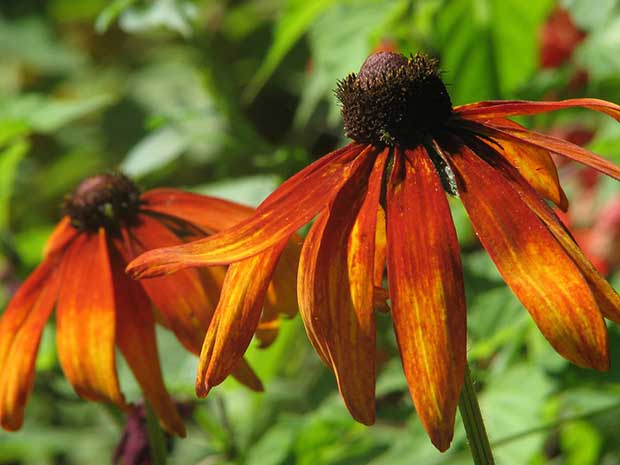Fall is a perfect time for new plantings! Not only is it an opportunity to see your garden wake up next spring new and improved, but many perennials and shrubs can be found on sale. Watering remains a necessity, but it will take less to keep your new plants happy than planting in the heat of Summer.
Plant fall mums, bulbs, asters, kale and ornamental cabbage as they become available during the next few weeks of September. Planting them when it’s cooled down a little will prolong their life.
Although early September is generally a good time to plant spring flowering bulbs, this year continues to be warm, and we suggest waiting until later in the month, ideally the third week of September until the last week of October. This will still give them enough time to get established before the ground freezes. If you have a significant deer and critter population nearby, daffodils are the best choice as deer don’t care for them. We find there is always confusion about which bulbs are planted in the spring and which ones in the fall, but with these lists, you won’t have to wonder. Fall and Spring Planted Bulbs.
Continue to deadhead and groom annual flowers. Some flowers will last well into October with continued care. Containers should need less water as the weather cools.
Transplant & Divide – Fall is a great time to divide and transplant perennials. After dividing, plant divisions just as you would a new plant. Follow this link to Learn how to divide irises and daylilies.
Weed, weed, weed. Continue to weed. Every weed removed will be many less next year.
Keep feeding plants regularly with an organic fertilizer like one from the Espoma line:
Plant-tone- Safe, long-lasting, 100% natural, organic plant food soil conditioner for all types of plants.
Holly-tone- The original acid-loving plant food for beautiful hollies, azaleas, rhododendrons, and evergreens. (Consider using Plant Tone for Boxwoods and Arborvitae since they’re low acidity evergreens.)
Rose-tone- Organically balanced plant food for the nurturing and growth of prize-winning roses.
Move strawberry and rhubarb plants every few years. These crops take a lot of nutrients from the soil, so they’ll be looking for new ground. Getting this done now will help plants develop good roots for the winter.
Not planting? – If you aren’t planting this fall, there is still an easy way to get ready for next spring’s plantings. Edging and making new planting beds can be done now in anticipation of next year. If you get started, winter will do half the work for you! To avoid having to dig sod for a new garden bed next year: cut grass; cover the ground with damp newspaper and top with compost or fresh mulch. In the spring, turn over the soil. Voila!
Remove annual plants that are spent from beds and containers, making sure to clean out all debris. After cleaning, add compost to the beds. By doing this, you can use the force of winter weather to mix in the compost and beds will be ready to use in the spring.
Spread compost in perennial beds. Perennials and shrubs will appreciate the nutrients for root health.
Pick up some bird netting to put over your water garden. When leaves begin to fall, you’ll be grateful for this extra help.
No pruning should be done on trees and shrubs now. It’s okay to remove any branch with disease or damage, but anything else should wait until late winter or early spring. As plants ready themselves for dormancy, they want to concentrate on root health, not pushing out new growth.
Clean up and dispose of fallen fruit and leaves around fruit trees. This will greatly lessen the chance of disease lingering through the winter ready to attack in spring.
Don’t panic when evergreens lose some inner needles in the fall. It’s normal!
Lawns: If it’s growing, keep mowing.
Seeding, re-seeding and patching the lawn can all be done in the fall. Fall has always been known as the best time to seed lawns. Rake up or till soil first and make sure to water every week after planting. Covering newly seeded areas with straw will keep birds from taking seeds.
Weeds don’t compete much in the fall so grass has the space to establish itself unimpeded.
If your lawn is already established, you can mow right over fallen leaves. As long as the pieces are small they’ll go right back into the soil and your turf will love it.

